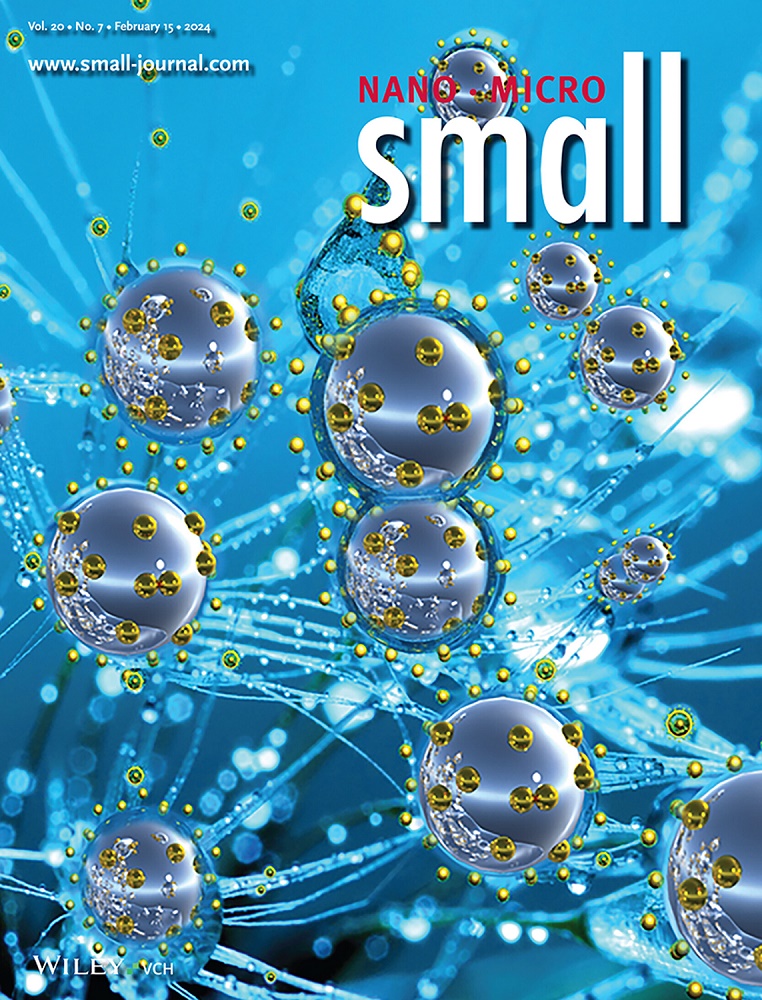cu气凝胶中的分层调制使突破CO2电还原对抗稳定性-效率-选择性权衡。
IF 12.1
2区 材料科学
Q1 CHEMISTRY, MULTIDISCIPLINARY
引用次数: 0
摘要
设计结合低过电位、高选择性和稳定性的电催化剂来解决二氧化碳电还原过程中稳定性-效率-选择性的权衡仍然是一个重要的挑战。本文提出了一种层次调制策略,用于硼(B)和锡(Sn)的精确组装,从而产生具有结构和功能层次的新型铜(Cu)-气凝胶(BSnCu3)结构,用于高级CO2电还原。表面组装的Tin形成了Cu0保护层,具有较高的稳定性,体组装的硼提高了对中间体的结合亲和力,并将Cu d带向上移动,以增强电荷转移。BSnCu3具有优异的性能,包括乙醇选择性为93.2%,法拉第效率(FE)为90.3%,超低过电位为0.12 V,以及出色的稳定性。利用硼/锡区域组装的协同效应和3D纳米线网络的高效电荷/质量传递,BSnCu3获得了创纪录的2.74权衡指数,超过了所有报道的值。这项工作提出了一个鼓舞人心的策略,并为先进的电催化剂设计设定了新的基准。本文章由计算机程序翻译,如有差异,请以英文原文为准。
Hierarchical Modulation in Cu-Aerogel Enables Breakthrough CO2 Electroreduction for Combating Stability-Efficiency-Selectivity Tradeoff.
Design of electrocatalyst combining low overpotential, high selectivity and stability for combating the stability-efficiency-selectivity tradeoff in CO2 electroreduction remains a crucial challenge. Herein, a hierarchical modulation strategy is proposed for the precise assembly of Boron (B) and Tin (Sn), resulting in novel copper (Cu)-aerogel (BSnCu3) structures with both structural and functional hierarchies for advanced CO2 electroreduction. Superficial assembled Tin creates Cu0 protective layer for high stability, the body assembled Boron improves the binding affinity to intermediates and shifts Cu d-band upward for enhanced charge transfer. BSnCu3 achieves exceptional performance, including an ethanol selectivity of 93.2%, a Faradaic efficiency (FE) of 90.3%, and an ultralow overpotential of 0.12 V, alongside remarkable stability. Leveraging the synergistic effects of regionally assembled Boron/Tin and the efficient charge/mass transfer of the 3D nanowire network, BSnCu3 attains a record-breaking tradeoff index of 2.74, surpassing all reported values. This work presents an inspiring strategy and sets a new benchmark for advanced electrocatalyst design.
求助全文
通过发布文献求助,成功后即可免费获取论文全文。
去求助
来源期刊

Small
工程技术-材料科学:综合
CiteScore
17.70
自引率
3.80%
发文量
1830
审稿时长
2.1 months
期刊介绍:
Small serves as an exceptional platform for both experimental and theoretical studies in fundamental and applied interdisciplinary research at the nano- and microscale. The journal offers a compelling mix of peer-reviewed Research Articles, Reviews, Perspectives, and Comments.
With a remarkable 2022 Journal Impact Factor of 13.3 (Journal Citation Reports from Clarivate Analytics, 2023), Small remains among the top multidisciplinary journals, covering a wide range of topics at the interface of materials science, chemistry, physics, engineering, medicine, and biology.
Small's readership includes biochemists, biologists, biomedical scientists, chemists, engineers, information technologists, materials scientists, physicists, and theoreticians alike.
 求助内容:
求助内容: 应助结果提醒方式:
应助结果提醒方式:


